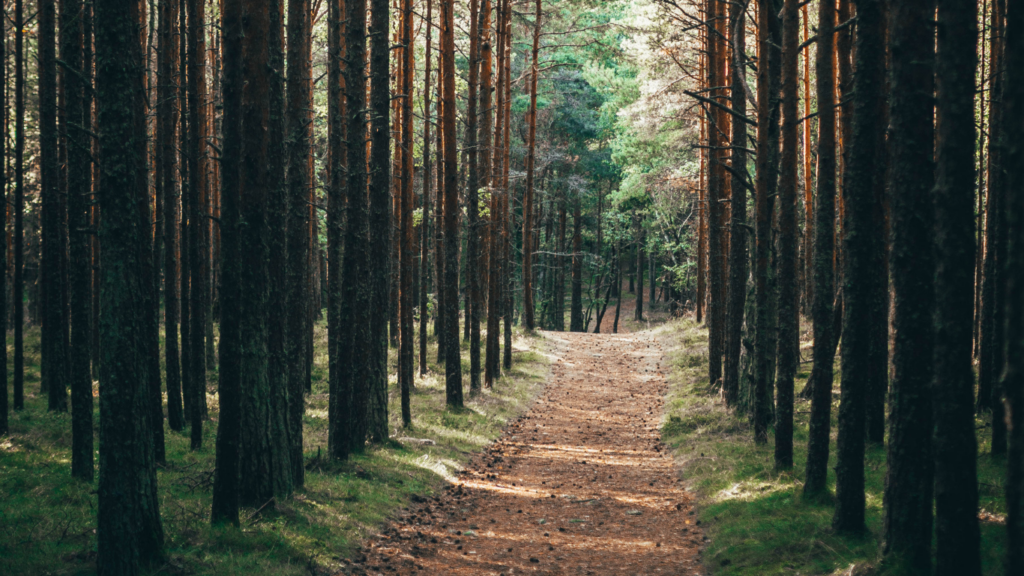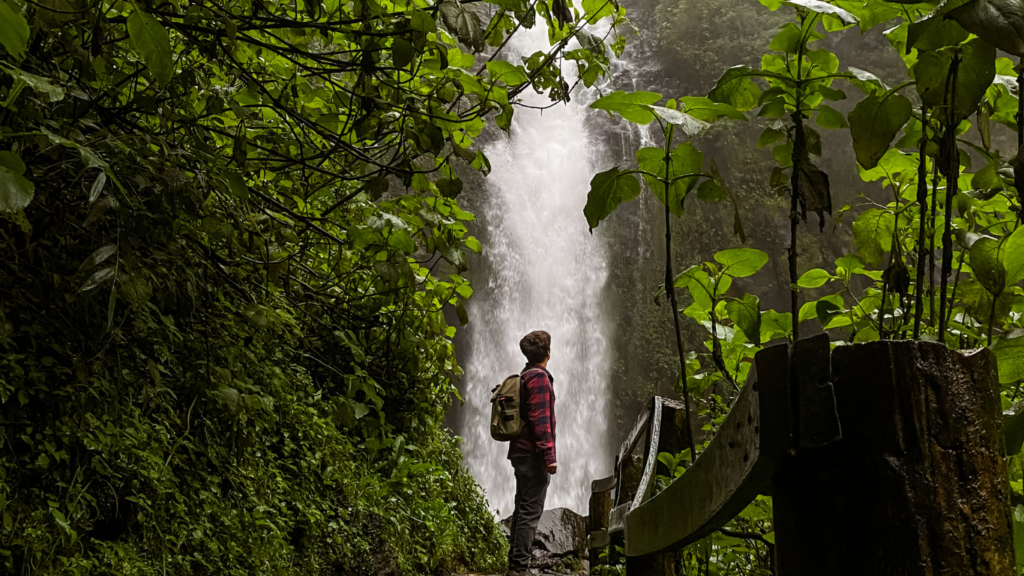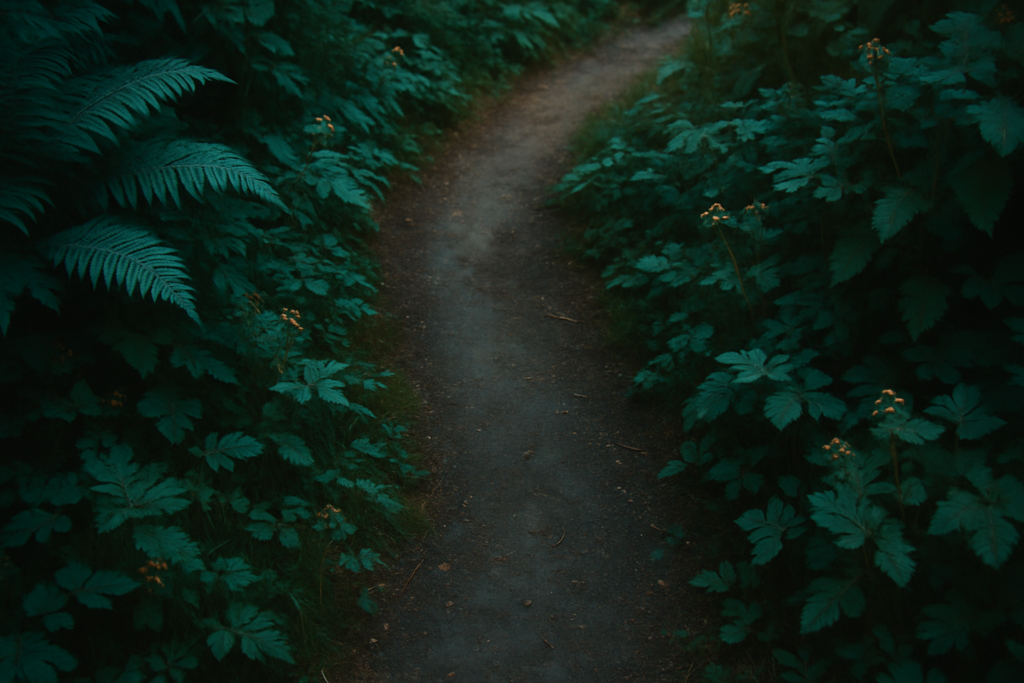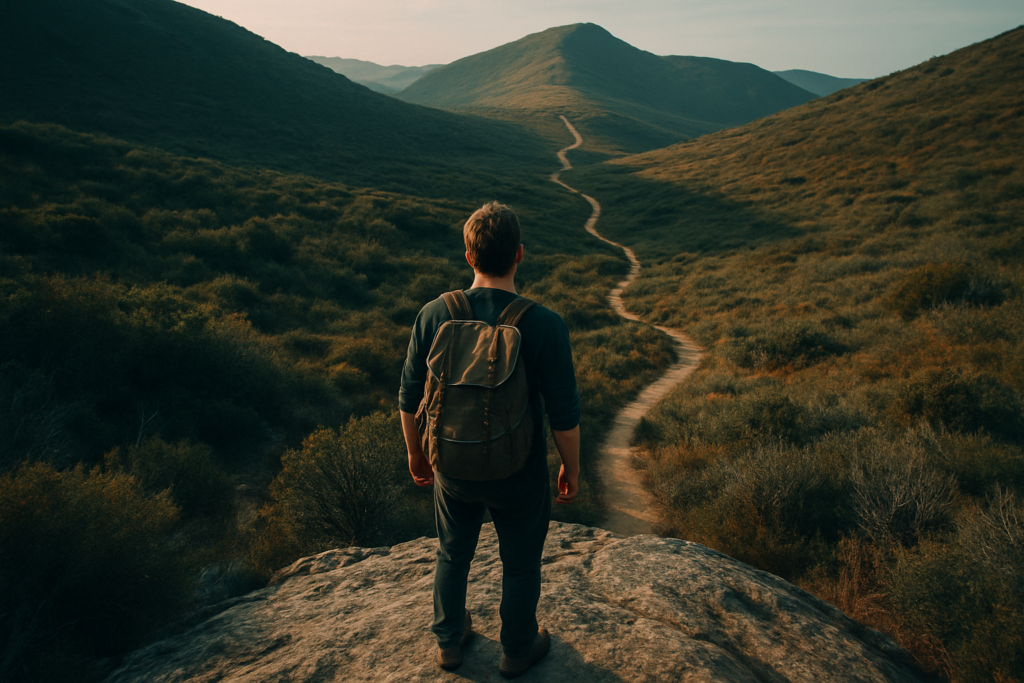Why Hike Forest Trails?
Hiking forest trails reveals unique experiences and benefits. Forests offer cleaner air due to dense tree populations which increase oxygen levels. This improves both mood and health. Trails often feature diverse ecosystems, presenting opportunities to see rare flora and fauna. Observing such biodiversity can be both educational and inspiring.
Forest trails also promote mental well-being. Natural environments reduce stress and anxiety levels. According to a study by the University of Michigan, spending time in nature can improve memory and cognitive function by 20%. This highlights the mental health benefits of hiking in forests.
Physical fitness gains are another reason. Forest terrain provides a natural workout, engaging different muscle groups through varied elevation and uneven paths. Hiking strengthens muscles while improving cardiovascular health. The American Hiking Society states that hiking burns between 430 to 700 calories per hour, depending on the hike’s difficulty.
Additionally, forest trails offer unique aesthetic experiences. Dense canopies, serene streams, and vibrant foliage create picturesque scenes. These natural landscapes provide photographers and nature lovers with endless opportunities for stunning images and peaceful moments.
Community building also happens on forest trails. Many trails are frequented by local hiking groups and nature enthusiasts, fostering connections and friendships. Hiking with others can enhance safety while sharing knowledge about the environment.
Lastly, hiking forest trails helps support conservation efforts. Park fees and donations often go towards the maintenance of trails and preservation of natural habitats. Hiking responsibly ensures that these beautiful ecosystems remain for future generations.
- Cleaner Air: Forests increase oxygen levels.
- Biodiversity: Opportunities to see rare flora and fauna.
- Mental Well-being: Reduced stress and improved cognitive function.
- Physical Fitness: Engages muscles and burns calories.
- Aesthetic Experiences: Picturesque scenes and natural beauty.
- Community Building: Connections with fellow enthusiasts.
- Support Conservation: Maintenance of trails and habitats.
North America’s Top Forest Trails

Hiking in North America offers some of the world’s most stunning forest landscapes. Below are details about two of the top forest trails.
Pacific Crest Trail, USA
The Pacific Crest Trail spans 2,650 miles from Mexico to Canada. This trail passes through some of the USA’s most scenic forests, including the Sierra Nevada and Cascade Range. Hiking through these regions, I find diverse ecosystems and breathtaking views. The trail’s varying elevations create a mix of forest types, from oak woodlands to alpine coniferous forests. Along the way, hikers encounter a variety of wildlife, such as black bears, deer, and numerous bird species.
West Coast Trail, Canada
The West Coast Trail stretches 47 miles along Vancouver Island’s southwestern coast. Known for its challenging terrain, this trail features rainforests, cliffside paths, and beach walks. Hiking this trail, I see lush old-growth forests filled with cedar and Douglas fir. The trail’s richness in wildlife includes sea lions, gray whales, and bald eagles. The combination of thick forest canopy, diverse marine life, and rugged coastline creates a unique hiking experience.
Europe’s Finest Forest Paths
Exploring Europe’s forest trails offers diverse landscapes and rich history. These paths provide adventure and serenity, attracting hikers from around the world.
Black Forest, Germany
The Black Forest in Germany is a hiker’s paradise. Covering approximately 2,320 square miles, it offers a variety of trails. For instance, the Westweg Trail spans about 177 miles from Pforzheim to Basel, highlighting deep forests, scenic views, and charming villages. This trail showcases the region’s dense woods and picturesque settings, including deep valleys and mountain lakes. Hikers can enjoy routes like the Mummelsee Loop, an 8.2-mile path around the enchanting Mummelsee Lake.
Plitvice Lakes National Park, Croatia
Plitvice Lakes National Park in Croatia stands out for its beauty and biodiversity. This UNESCO World Heritage site covers nearly 115 square miles. The park features 16 terraced lakes connected by waterfalls and cascades. The park’s hiking trails, such as the K Trail, offer an immersive experience through lush forests and along crystal-clear waters. Hikers can expect dynamic terrain and vibrant flora and fauna, making every hike memorable.
Europe’s finest forest paths allow hikers to connect with nature and experience its diverse offerings firsthand.
Asia’s Enchanting Forest Hikes
Asia offers a diverse range of forest hikes, each with unique landscapes and rich ecosystems. The following trails are among the most mesmerizing.
Yakushima Forest, Japan
Yakushima Forest, located on Yakushima Island, offers ancient cedar trees and lush greenery. Hikers can explore Shiratani Unsuikyo Ravine and Jomon Sugi, the island’s oldest tree, estimated at over 7,000 years old. The forest’s moderate climate supports diverse flora and fauna, including the Yaku monkey and Yakushima deer. Trails vary in difficulty, from short walks to challenging multi-day hikes.
The Western Ghats, India
The Western Ghats, spanning six states in India, is a UNESCO World Heritage site and biodiversity hotspot. The forested hills offer trails through tropical rainforests, shola grasslands, and high-altitude peaks. Popular routes include the Kudremukh Trek in Karnataka and the Chembra Peak Trail in Kerala. Hikers might encounter endemic species like the Nilgiri tahr, lion-tailed macaque, and Malabar giant squirrel. The region’s climate ranges from humid in the lowlands to temperate in the higher altitudes.
South America’s Most Scenic Forest Treks
South America offers some of the most picturesque forest treks. Hikers can explore unique ecosystems teeming with diverse flora and fauna.
The Amazon Rainforest, Brazil
The Amazon Rainforest spans over 2.7 million square miles, covering multiple countries in South America. In Brazil, treks through this vast forest provide an unparalleled opportunity to experience its rich biodiversity. Trails such as the Anavilhanas Archipelago lead hikers through dense vegetation, where they may encounter wildlife like jaguars, sloths, and a myriad of bird species. Guided tours often include boat excursions along the Amazon River, adding a unique element to the trek.
Torres del Paine National Park, Chile
Located in southern Chile’s Patagonia region, Torres del Paine National Park offers hikers breathtaking views of forests surrounded by mountains, glaciers, and lakes. The W Trek, a popular 50-mile route, takes hikers through the lush Magellanic subpolar forests. Trekkers can enjoy picturesque landscapes filled with lenga beech trees, vibrant wildflowers, and crystal-clear waterfalls. The hike also features spectacular sights of the Grey Glacier and the iconic Paine Towers, making it an unforgettable adventure.
Essential Tips for Forest Hiking
When hiking through stunning forests, following essential safety precautions and packing the right gear ensures a safe and enjoyable experience.
Safety Precautions
I always familiarize myself with the trail. Checking maps and reading reviews provides insights into the trail’s difficulty and conditions. Wearing proper footwear, like hiking boots, helps prevent injuries. It’s important to stay on marked trails because venturing off can lead to getting lost or damaging the ecosystem.
Having a plan is crucial. I inform someone of my plans, including the route and expected return time. Carrying a fully charged phone and a GPS device boosts safety but relying solely on them isn’t advisable. Bringing a physical map and compass is vital. Weather can be unpredictable, so I check forecasts and dress in layers to adapt to changing conditions.
Packing Essentials
Packing the right essentials guarantees a comfortable hike. I carry a backpack with water bottles or a hydration system to stay hydrated. Snacks like nuts, fruit, and energy bars provide quick energy boosts. A first-aid kit with bandages, antiseptic wipes, and any personal medications addresses minor injuries.
Multi-tools are versatile and handy for various needs, from cutting rope to fixing gear. I include a flashlight or headlamp with extra batteries in case the hike takes longer than anticipated. Using trekking poles reduces strain on my legs and enhances stability on uneven terrain.
With these tips in mind, I stay prepared, enjoy the hike, and make the most of the incredible natural beauty found in the world’s most beautiful forests.




